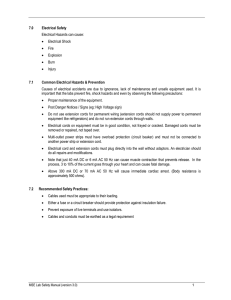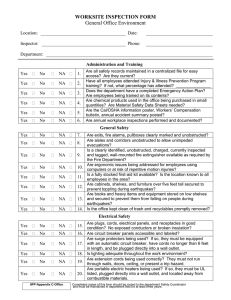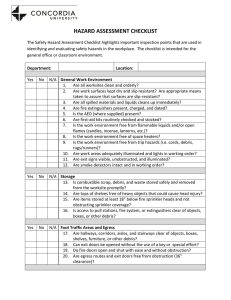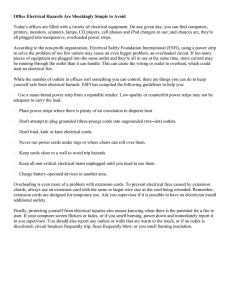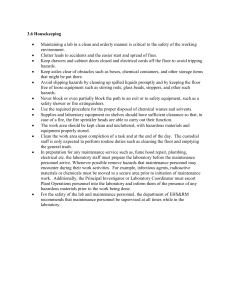Electrical Safety Standards
advertisement
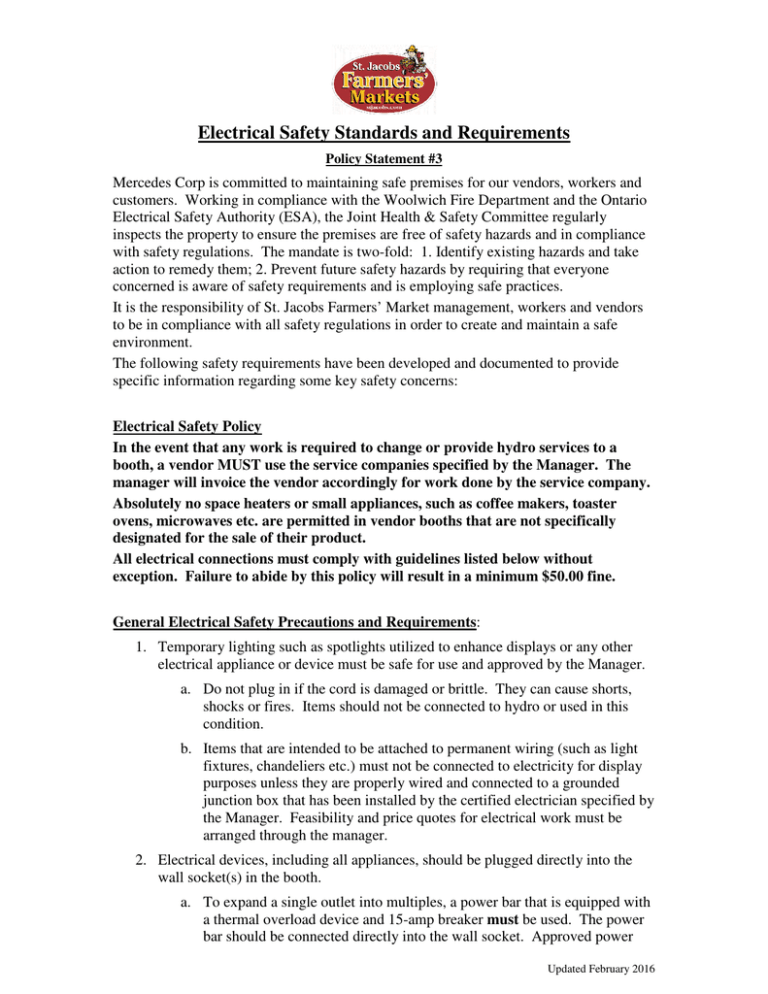
Electrical Safety Standards and Requirements Policy Statement #3 Mercedes Corp is committed to maintaining safe premises for our vendors, workers and customers. Working in compliance with the Woolwich Fire Department and the Ontario Electrical Safety Authority (ESA), the Joint Health & Safety Committee regularly inspects the property to ensure the premises are free of safety hazards and in compliance with safety regulations. The mandate is two-fold: 1. Identify existing hazards and take action to remedy them; 2. Prevent future safety hazards by requiring that everyone concerned is aware of safety requirements and is employing safe practices. It is the responsibility of St. Jacobs Farmers’ Market management, workers and vendors to be in compliance with all safety regulations in order to create and maintain a safe environment. The following safety requirements have been developed and documented to provide specific information regarding some key safety concerns: Electrical Safety Policy In the event that any work is required to change or provide hydro services to a booth, a vendor MUST use the service companies specified by the Manager. The manager will invoice the vendor accordingly for work done by the service company. Absolutely no space heaters or small appliances, such as coffee makers, toaster ovens, microwaves etc. are permitted in vendor booths that are not specifically designated for the sale of their product. All electrical connections must comply with guidelines listed below without exception. Failure to abide by this policy will result in a minimum $50.00 fine. General Electrical Safety Precautions and Requirements: 1. Temporary lighting such as spotlights utilized to enhance displays or any other electrical appliance or device must be safe for use and approved by the Manager. a. Do not plug in if the cord is damaged or brittle. They can cause shorts, shocks or fires. Items should not be connected to hydro or used in this condition. b. Items that are intended to be attached to permanent wiring (such as light fixtures, chandeliers etc.) must not be connected to electricity for display purposes unless they are properly wired and connected to a grounded junction box that has been installed by the certified electrician specified by the Manager. Feasibility and price quotes for electrical work must be arranged through the manager. 2. Electrical devices, including all appliances, should be plugged directly into the wall socket(s) in the booth. a. To expand a single outlet into multiples, a power bar that is equipped with a thermal overload device and 15-amp breaker must be used. The power bar should be connected directly into the wall socket. Approved power Updated February 2016 bars, equipped with a 15 amp. breaker must be purchased at the Market Office and are available with either a 6 ft. or a 15 ft. cord. b. Appliance or power bar cords that are run along the floor in order to reach the front of the booth must be plugged directly into a wall socket, and encased in protective floor track covers. Approved floor track covers can be purchased at the market office. 3. Electrical safety hazards are considered highly dangerous. Any that are found, including those listed below, will result in immediate disconnection and removal of the defective or improper wiring or equipment. They will be “tagged out” (taken out of service) until they are correctly repaired or replaced in compliance with electrical safety regulations. a. DO NOT plug multiple cords into a single receptacle or use splitters to add outlets creating an electrical “octopus” (as illustrated on the right). This practice can overload the circuit and cause electric shock or fire. b. DO NOT use extension cords of any type. c. DO NOT run electrical cords along the floor without being covered by approved floor cable covering, available for purchase at the Market Office. They can be damaged by foot traffic and become unsafe and/or cause a trip hazard. d. DO NOT use metal staples, twine, wire or anything other than insulated staples to secure electrical cords to a structure. Updated February 2016
